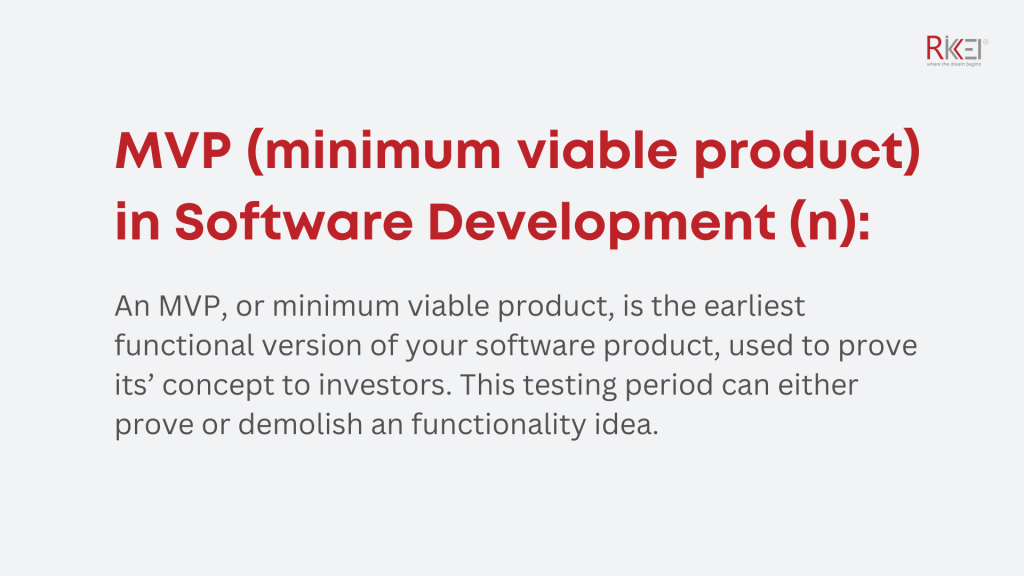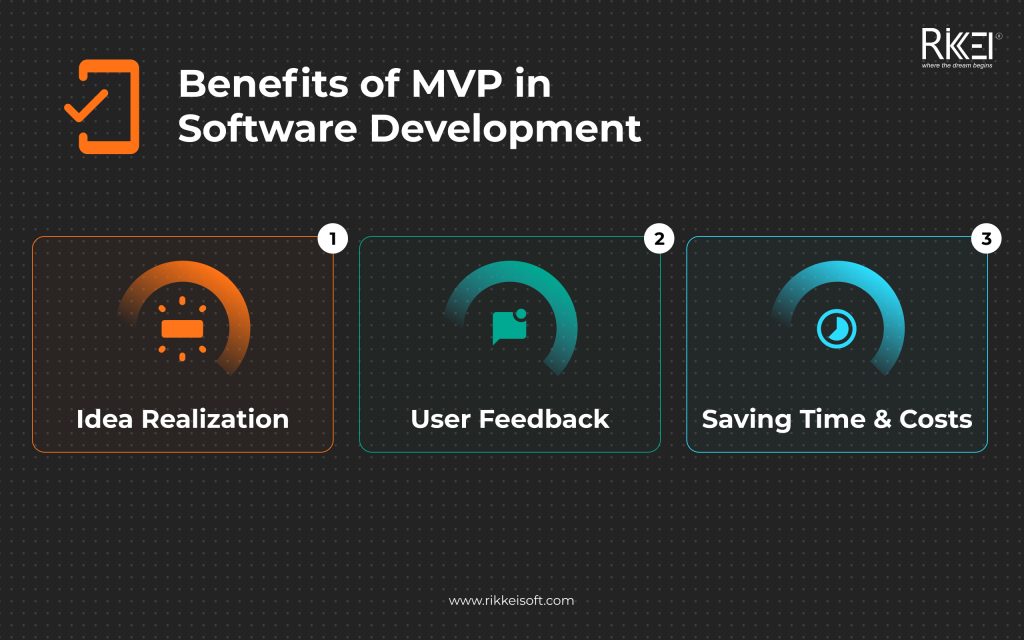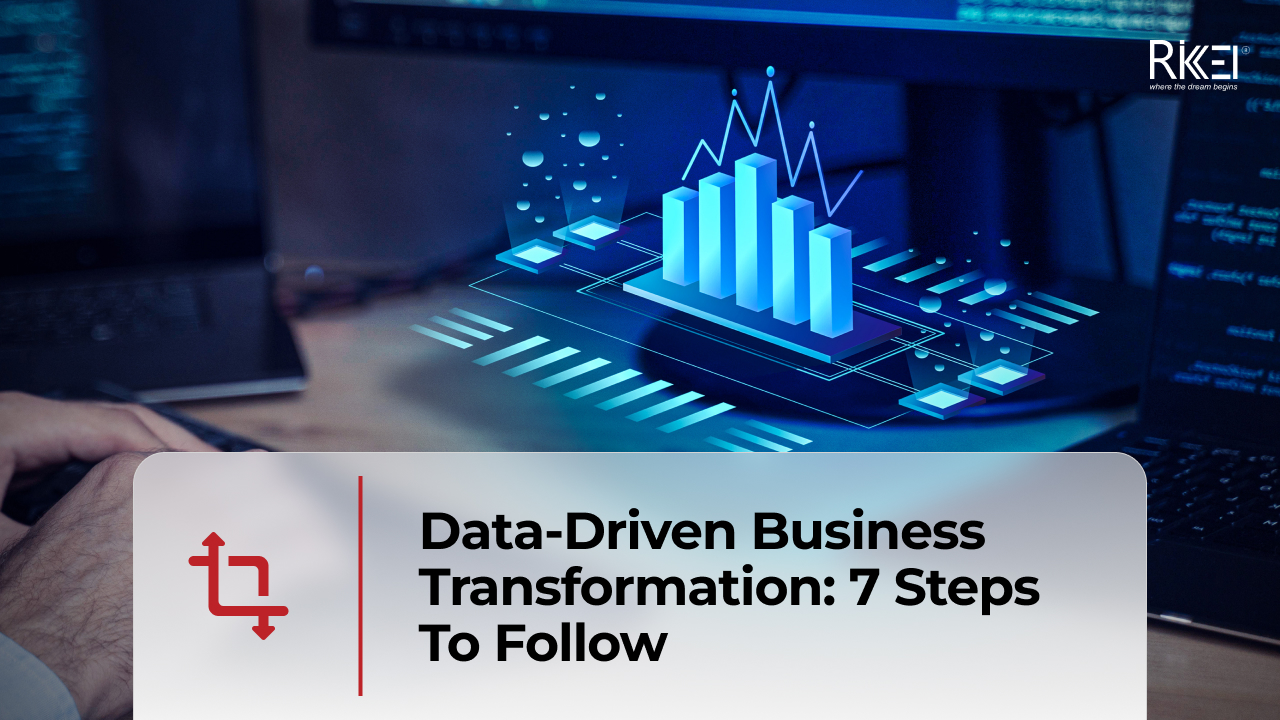What is MVP in Software Development? [Detailed Explaining]
Contents
We’re sure you’ve heard of the term MVP. But here, we are not talking about the most valuable players, we are talking about computers and programs. In software development, we’re talking about an MVP, sometimes known as a “minimum viable product,” a step where you validate the problem and test the solution.
What is MVP in Software Development?

An MVP, or minimum viable product, is the earliest functional version of your software product, used to prove its’ concept to investors. This testing period can either prove or demolish a software development idea. The MVP can then be tested by users, after which the input is gathered by developers to continue developing the MVP and boost the likelihood of success of a software product.
MVP contains a small number of essential elements that allow you to answer three basic questions:
- Is your product in demand?
- Does it address any problems that users may have?
- Is it monetizable?
The term ‘minimum viable product’ itself was coined in 2001. Back then Frank Robinson, CEO at SyncDev together with innovators Steve Blank and Eric Ries worked on Customer Validation and Development and came up with such a word. MVP is the clearest example of a product idea that checks how well the market reacts to a solution.
In the perspective of validating business ideas, the MVP is viewed as an experiment. It determines whether a business idea is viable and lucrative by evaluating any doubts that users may have. It is advantageous for new organizations and startups to discover where prospective business possibilities exist.
It is rather common for entrepreneurs to market concepts and strategies to investors who will fund the plan. The emphasis are then shifted to assembling the team and carrying out the plan. What has been missed is a genuine focus on understanding and how to reduce risk and guide execution. An MVP can let testers beta run your product, helping tremendously with the guiding process and how to minimize your risks when introducing your product
What is the MVP Used for?
As you cannot build a home before a foundation, you can’t create an effective product before building an MVP. An MVP in software development has to go through many steps:
- First, we begin with a modest use case
- After having a use case, we then test it
- Finally, we determine whether to proceed in a different path or grow the idea into a complete product solution.
An MVP in software is a vital component of your approach if you’re aiming to further prove your product’s worth. During its conception, MVP was developed with huge emphasis on validation. Eric Ries explains, “The minimal viable product would be that iteration of a particular model that allows a team to collect the greatest portion of validated learning regarding customers with the least work.”
A minimal viable product has numerous practical applications and uses in addition to a slew of advantages:
- An MVP in software can help you prove theories about growth and profitability and success measures, among other things. You can’t learn unless you measure. You want to employ your MVP to test your product’s market potential by using whichever success metric is acceptable for your use case.
- In relation to the preceding concept, a minimal viable product is a good tool for risk assessment. Because an MVP provides a limited set of functional features, it’s a relatively rapid approach to assess the risks associated with releasing a full-fledged product.
Key MVP Characteristics
Keep these following key aspects in mind to get the most out of your MVP.
- First always, invest as little money and time here on the MVP as feasible. Otherwise, it contradicts the goal of reduced, low-cost validation.
“A Minimum Viable Product should be produced to confirm an idea or assumption as quickly as possible and monitor user momentum, without spending too many resources from the outset,” says Diana Sabau, Technical Manager at 3Pillar Global. One such product should include a limited but unified set of features that will entice consumers to explore the application and provide input so that the project team may iterate and innovate further.
An MVP in software also has the following characteristics:
- An MVP is the blueprint of your vision. “Minimum” doesn’t equal inferior quality. “Minimum” means it has to viably answer early customers’ top concerns since day one, developing only those features initially and putting the rest on the backlog until we’ve established product/market fit,” according to The Pragmatic Institute. In other words, although it is designed to consume as few assets as possible, it is not a quick release and requires deliberate thought. Eric Ries warns that it is not formulaic enough for practical use. It takes judgment to determine what MVP in software makes perfect sense in any particular scenario.”
- Your MVP must be designed to accommodate change. The Minimum Viable Product must always thrive at changing – preferably based on new information from buyers and users, but the push to make changes could also come from competitors, consumer issues, or a desire to prolong a product to a platform strategy. Regardless of the reason, your MVP is the first publicly released product and the foundation for all subsequent versions.
- An MVP has to be practical. Remember, it’s a product, and if it doesn’t work in the most heuristic way, you won’t be able to test anything else with users.
- An MVP should strive to address a problem. There will be no product/market fit if the MVP does not solve an issue. One of the reasons you invest as little effort as possible on your MVP is to reduce the risk if your assumptions about problems the product can solve are wrong.”
An often-seen risk is that the competitors may see your products, so you’ll not want to rush them out. Except in extremely rare circumstances, this urge should be avoided. To protect your brand and provide early users with a reason to return if they did not like the product initially, you can release your product under “alpha,” “beta,” or “pilot” labels. This gives you a chance to go back to the drawing boards if your outcomes on the MVP release aren’t up to expectations. Each label is also an opportunity to re-set standards within your firm, as well as with shareholders, purchasers, and users.
The Best MVPs in Software Development
French Real Estate Association’s Mobile Application
The French Real Estate Association requested a smartphone app for realtors that provides real-time information about houses for sale or rent. Market research and business analysis were done to identify features and tools that should be included in the platform. From that, an application was designed for iOS that facilitates interaction between agents and clients. It helped increasing client satisfaction and the number of successful transactions.
The MVP now has the following features:
- Real-time market visibility with the ability to geolocate and refine queries to acquire properties that satisfy customer needs
- Thorough descriptions of properties posted on the platform
- Collaborative features so that clients and brands can work together
- Custom-made notifications
Dollar Shave Club Android Application
The Softermii design team produced an MVP for the Android version of Dollar Shave Club’s eCommerce application. It offers customized packaging and distribution of razor blades, handles, skincare products, and other male shaving items to guys. The MVP version of that was a single product with features such as:
- Single-click purchase ofshaving products
- Easy payment with credit cards
- Gifting to friends
They A/B tested the MVP version and achieved amazingoutcomes with all platforms and social user groups. The devoted staff also assisted in increasing Dollar Shave Club conversion rates, followed by additional product development.
Parta Mobile Application
Parta is a video and audio conferencing application with significant capabilities, including:Broadcasting; Streaming; Private calls; Video rooms; AI-generated news feed; Gifting, and more!.
During the development process, the team at Partaput in a lot of effort to create a social media network app and produced an MVP in three months despite the difficult nature of the app development. End users were greeted with a functional, competitive application. The pre-built video conferencing engine VidRTC was utilized to its fullest to simplify the entire process.
Benefits of MVP in Software Development

Idea Realization
Much like storytelling, professional software development is dependent on the final version of the product. In this case, software developers are similar to authors – they might have a solid notion of how they want the end product to look like and how it to behave. To reach there, however, the product needs to undergo many twists and turns. An MVP sets a starting point for your ideas to grow from.
User Feedback
A software’s changes and alterations are often brought forth by user feedback. User feedback, maybe as crucial as the vision itself, impacts the functionality, user pleasure, and, ultimately, the success of a product. Follow the MVP mantra: Learn, Build, Measure, and Repeat!
Nothing is more vital than your users’ satisfaction at the end of the day. Which depends on responding to customer feedback to produce modifications that will determine your digital product’s success. That is why your most valuable player is a minimum viable product.
Saving Time & Costs
Another significant advantage of launching an MVP is that it helps your firm save time and money over the long term. If your potential buyers don’t appreciate your current product enough or don’t think it’s valuable enough to pay for, then your product might not worth investing in. By maintaining your team’s interest in input, you will not just be able to pinpoint the need for a pivot, but you will also have superior quality hypotheses about where to direct the product/company.
MVP Development Cost
The cost of MVP development for companies and organizations is determined by a variety of factors, including:
- Product complexity
- Features
- Size
- Design
- Time schedule
The number of persons on a design team can also affect the pricing. A team will normally require a Project Manager a Business Analyst, UX/UI Designers, front-end and back-end developers, as well as mobile developers as needed.
Details of hiring for MVP development
- Estimation, Research and UI/UX design
The discovery phase is always the first step in the development process. This is where a comprehensive review of the goods, its steps, and advantages will be explained. We investigate your project’s requirements, demands, and desires. Our organization then compiles a collection of items for examination.
We collect all the essential data and evaluate it to uncover trends that are pertinent to your expectations. And our firm approves all aspects of your upcoming MVP product with you.
- Following the business study, wireframing and prototyping will take place. This stage focuses on user experience design, analyzing the intended audience, and developing customer journey and flows. Hi-fi wireframes or low-fi models will be the UX deliverables. Once the customer has consented to the concept, this is when UI design starts.
- Development
You’ll choose which technologies to use in creating your features, based on their purpose. Based on that decision, the choice of database, coding language and CRM to use is made. It is also crucial to determine the optimal approach for your app’s development to match your timetable and budget, such as employing API integrations, SDKs, and building functionalities from scratch.
- Testing and launch
The development step is followed by continuous testing by a Quality Assurance team. . These experts run a variety of tests to ensure that everything in your application functions properly. Any bug and error found should immediately be fixed by the development team in this stage of MVP development.
If you want to know how you can take your idea to the next step and develop a minimum viable product that works, get in touch with us to talk about the plans.
Rikkeisoft – Your Partner in Software Development
If you are a small business owner, all these might sound foreign to you – you just wanted a proof of concept for your software idea! Luckily, you can outsource your MVP in software development needs, and Rikkeisoft can be a great choice.
Founded in 2012, Rikkeisoft is a leading Information Technology firm in Vietnam that specializes in IT outsourcing services. With over 10 years of experience and a diverse talent pool, Rikkeisoft is always ready to help you with any and all of your IT needs.
Conclusion
Now that you have gotten an idea of what MVPs in software development are and how important they can be in the lifecycle of your software product, you should pay more attention to them in your next software venture. After all, an MVP is your first impression with end users, and a good impression does wonders for your business afterwards.
More From Blog

August 8, 2024
Data-Driven Product Development: Strategy To Drive More Sales
As a business owner, you want your products or services to be well-received upon launch. The most effective way to create a product that satisfies a broad range of customers is to gain insights into their needs and behaviors from the outset. The key lies in data-driven product development, a strategy that many companies have […]

August 8, 2024
7 Steps To Establish A Data-Driven Governance Program
While data-driven approaches significantly benefit organizations in various ways, failure to govern the huge data sets will hurt your business even more. Effective data management also ensures data quality and security. That’s why there is an increasingly high demand for data-driven governance programs. Continue reading for a detailed guide! What Is Data-Driven Governance? Surprisingly, many […]

August 8, 2024
Data-Driven Business Transformation: 7 Steps To Follow
Data empowers businesses to make well-informed decisions in different departments, like marketing, human resources, finance, and more. As a business owner, you should also employ data-driven approaches to skyrocket productivity and efficiency. If you are still new to this concept, scroll down for an in-depth guide on data-driven business transformation. What Does A Data-Driven Business […]

August 8, 2024
Data-Driven Security: Transforming Protection Through Analytics
Cybersecurity was once an afterthought for most organizations. But in today’s digital landscape, it has become mission-critical. With this transformation has also come a shift in how security decisions are made. Rather than relying solely on intuition and tradition, leading organizations are embracing data-driven strategies. By using metrics and insights around threats, vulnerabilities, and more, […]

August 8, 2024
Differences Between Data Science and Computer Science
Data Science and Computer Science are distinct fields overlapping in certain areas but have different focuses and objectives. The article below will help you clearly understand the differences and the close connection between the two fields. What is Data Science? Data Science is an interdisciplinary field that combines scientific methods, processes, algorithms, and systems to […]

August 8, 2024
How Real-Time Data Analysis Empowers Your Business
In today’s fast-paced business landscape, the ability to quickly make data-driven decisions has become a key differentiator for success. Real-time data analysis, the process of analyzing data as soon as it’s generated, has emerged as a powerful tool to empower business across industries. By leveraging real-time data analysis, organizations can gain timely and actionable insights, […]
![What is MVP in Software Development? [Detailed Explaining]](https://rikkeisoft.com/wp-content/themes/main/assets/images/home/logo.svg)
